The second bowling green in the park is no longer being used. Suggestions for other uses would be welcome. Are there any other sporting ideas? Ideas should be put forward by the end of December 2025.
Category Archives: Information
COMMUNITY APPLE PRESSING 21 SEPTEMBER 10.00-15.00
Incredible Edibles and Friends of Westminster Park
COMMUNITY APPLE PRESSING DAY
Sunday 21st September 2025 10 am to 3pm
Come and find us near the Café in the park.
Bring your own apples (or there may be some to pick from the trees in the park) Do bring a container for the juice you will make!
Any queries, contact Linda Shuttleworth on shuttleworths@talktalk.net or 07726 425847
Cafe Terrace Project

Bring on the butterflies
|
Whether you have one pot or a large plot, follow our top tips below for creating a Wild Space to attract butterflies and moths ready to start counting. The count will take place from Friday 12th July and run to Sunday 4th August 2024. Butterflies and moths need places to feed, breed and shelter. Give them a reason to visit your outdoor space by providing what they need to do one or all of these things! Feed: The number one way to bring butterflies and moths into your Wild Space? Provide them with the things they love to eat. Great sources of nectar include flowers like Scabious, Lavender, and Verbena bonariensis. You can also try adding herbs like Rosemary, Thyme and Marjoram, or climbers like Honeysuckle and Jasmine. Plant them in a border in bigger spaces or add to pots or window boxes if room is limited. Even one pot can make a difference! Breed: Butterflies and moths like to lay their eggs on or near the plants that their caterpillars like to eat. To attract them to your Wild Space, add some caterpillar favourites like Ivy, Nasturtiums, and Bird’s-foot-trefoil, or just let a patch of grass or nettles grow – nettles are the foodplant of Red Admirals, Small Tortoiseshells, Commas and several other species! Shelter: Adult butterflies and moths and their caterpillars need places to shelter to protect them from the elements and to help them avoid predators. If you’ve got a large space, like a garden, create a log pile using old branches, sticks and leaves. Or, if you’ve got a smaller space, like a balcony, try adding Ivy in a trellis planter or create a mini log pile on a tray for easy maintenance. Don’t have a Wild Space? Don’t worry – you can still take part in the Big Butterfly Count! Head out to your local park, green space, or even find an un-mown verge and spend 15 minutes counting what you see. |
| Take part in the Big Butterfly Count |
FoWP Annual General Meeting
Our AGM will be held at Westminster Park Community Centre on Monday 19 February 2024 at 20.00. All welcome.
History & Heritage
THE PARK AND THE NATIONAL SHOW
People sometimes speculate about what was on the ground before Westminster Park was developed. Earlier it was farmland, and the field names can be seen on the 1841 tithe map. Volunteers working in the woodland areas of the park recently uncovered some of the network of clay pipes used to keep the land drained.
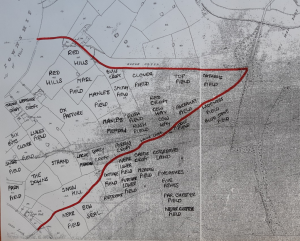
But amazingly, from Tuesday 7th to Saturday 11th July 1925, the annual Royal Agricultural Society Show was held on these fields! The showground covered a massive 160 acres, and extended from Cavendish Road to St Marks Road (then Roberts Lane), and from Lache Lane nearly to Hough Green. This was a huge and nationally significant event!
A special rail siding was even constructed nearby by the Great Western Railway Company, with new docks and cranes to deal with the show traffic, increasing the 600 wagon capacity of the Saltney sidings by a further 160 wagons! A roadway built from the sidings gave direct access to the showground for stock and machinery arriving by rail. The GWR also hired a combined traction engine and jib crane to haul goods between the sidings and the show ground.

Plan of showground, reproduced by kind permission of Royal Agricultural Society of England Archives
There were competitions and shows for dogs, horses and livestock, and for produce, especially Cheshire Cheese; demonstrations of fruit tree planting, and of how to use the newly available electric power for agricultural and domestic purposes. There was a revival of an ancient form of power, the windmill, with improved types demonstrated. Both behind and ahead of its time! Agricultural machinery was shown, there were Milk Yield Trials, Butter Tests, Cheese Making Experiments, Forestry Exhibitions, a Plantation Competition, and an Agricultural Education Exhibit
There was international interest! Visitors from the ‘Continent and the Overseas Dominions’ came on the opening day, including a party of farmers from South Africa, who were received by the President of the show, Sir Gilbert Greenall. On the Wednesday, His Majesty King George V, the Royal Patron of the Society, visited the show. The King arrived at the showground in an open carriage, and was received by Sir Gilbert at the Royal Pavilion, which was a mock 16th century Cheshire building designed by Browns of Chester. The King spent some five hours at the Show, touring the exhibits, receiving a Dee salmon and a Cheshire cheese and taking luncheon and tea. After his departure, the Royal Pavilion was opened to the public, with visitors being asked to place a donation in a box, for the benefit of the Chester Royal Infirmary.
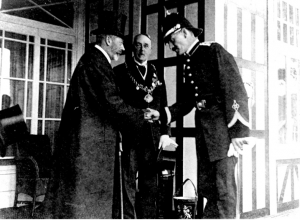
Chief Constable of Chester meeting the King at RAS Show, reproduced by permission of Chester History and Heritage (now History Hub)

On the last day, the Show was visited by several thousands of children from the schools in Chester and the surrounding neighbourhood.
112,880 people paid for admission to the Show that week, and it made a surplus of £345 overall.
After all this excitement and attention, the area reverted quietly to fields and memories. Mrs. Betty Davies, who lived all her life in the area, remembered as a child helping herself to vegetables left growing on the site after the Show was over. Several people who grew up in Lache Park remember a concrete silo and milking parlours in the open ground which remained between Alun Crescent and Rydal Grove until the late 1980s. These were thought to have been remnants of the Royal Show. The ‘silo field’ was much used for football, cricket and bonfires by the local children. To find the truth, I contacted the RAS Archivist, Mr Phillip Sheppy, who helped me to identify the stand of British Portland Cement Association Ltd in that area. They had been exhibiting concrete buildings suitable for a smallholding, and other concrete products!
Some have said that Circular Drive was built for the Royal Show, but in fact it was a later development, being part of a planned southern bypass scheme, which was interrupted by the Second World War and never completed. The beginnings of a substantial embankment, to take the road over the railway line, can still be seen in the fields just south of Green Lane.
The Kings School later took over some of the showground land for use as playing fields, with a caretaker’s house, known as ‘The Lodge’ at the corner of what is now Clifford Drive and Oldfield Crescent. The land which is now the park was later leased to the City Council. During the war, there was a gun emplacement on the site of what later became the Council’s Nurseries and greenhouses (accessed by the metal gate still in Lache Lane).
An initial design for laying out a Public Park was outlined in the Council’s comprehensive 1945 post war redevelopment plans, but nothing was actually done until the late 1970s. The Golf Course was opened first; it was intended to generate the funds to pay for the rest of the Park, but little happened until the Westminster Park estate residents fundraised for a children’s playground, with swings and a slide.
The park continues to evolve and develop, and has provided us with a welcome green respite during the recent Covid lockdowns. Volunteers have been working (under CWAC parks staff guidance) on some of the more neglected aspects. Details on the noticeboards, if you would like to join them for a green workout!
Linda Shuttleworth, Lache and Westminster Local History Group.
City Nature Challenge – Saturday 29 April 10.00-12.00 and 13.00-15.00
Volunteers will be in the park on Saturday to guide and advise you. Please see attached pdf poster.
Volunteers in WP
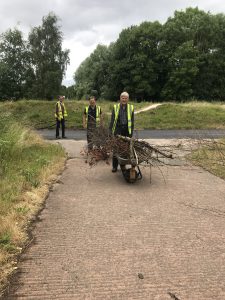
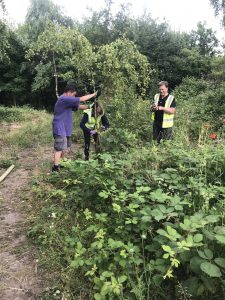

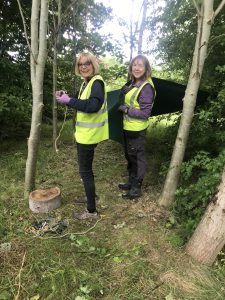
 Volunteers at work in the park
Volunteers at work in the park
Continuing projects in the park




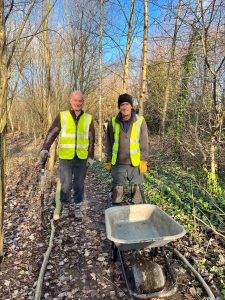
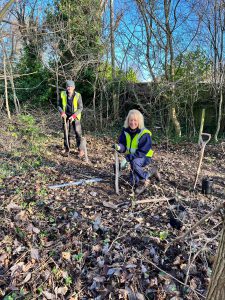
Volunteers have been working on the woodland area, creating paths using wood chippings. We’ve also been reinforcing fences and securing the area. Our zoo champions are creating wildlife areas and will be installing bat and bird boxes, as well as working on toad and hedgehog shelters. Pond work is on-going. Maintenance of the formal flowerbeds is always required.
A group meet every Wednesday from 10.00 and work on various projects in the park. Additional volunteers always welcome.
Wednesday Volunteering Sessions 10.00-12.30
Happy New Year! We’ll be back working in the park on Wednesday 12th January 2022 from 10.00 till about 12.30.
Come along and help – there are a variety of tasks that we undertake from weeding in the formal beds to more heavy duty work. There will be something to suit any willing volunteer. Please wear appropriate footwear/ clothing, as well as gardening gloves and bring any equipment you may need.
